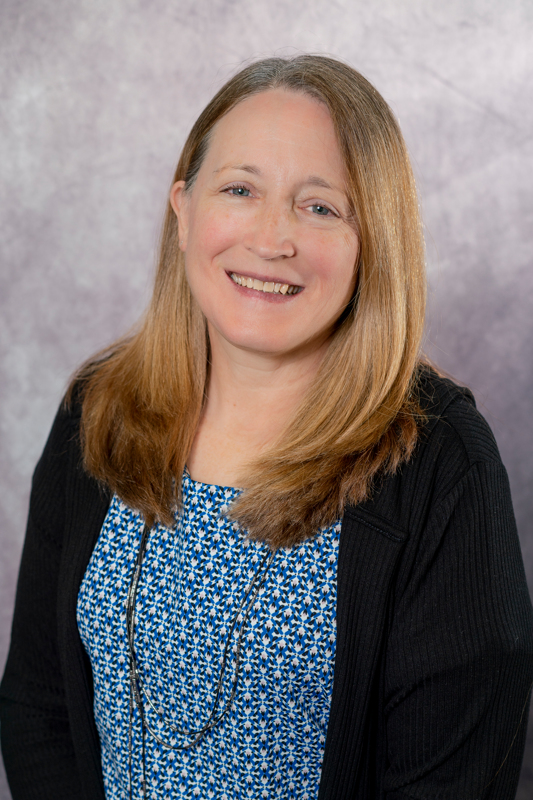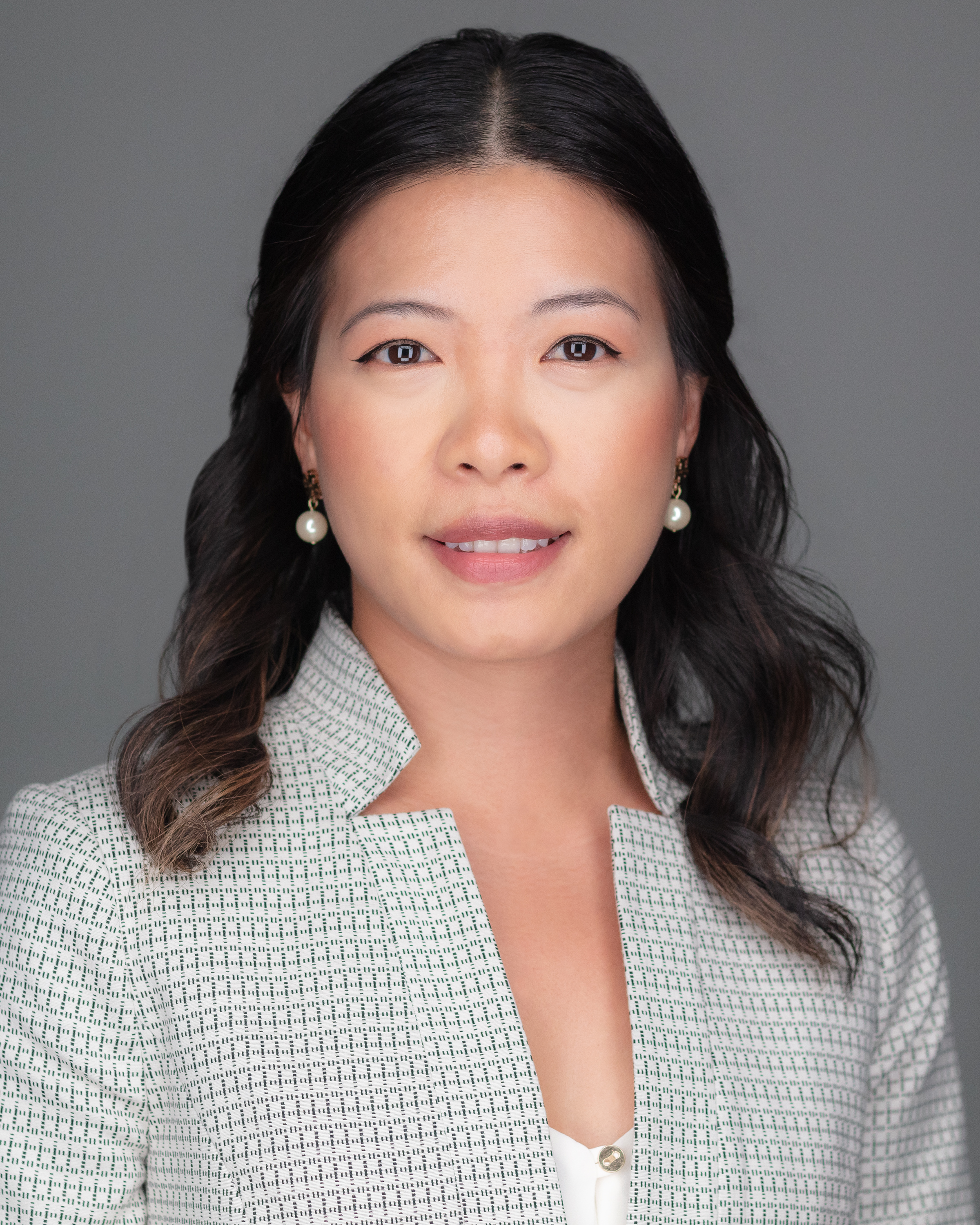
What Advanced Practitioners Need to Know About Follicular Lymphoma: Diagnosis and Treatment
Module 2: Treatment Options for Relapsed/Refractory Follicular Lymphoma (Part 2)
Susan Woodward, MSN, APRN, AOCNP®, Zanrha Esteban, MPA, PA-C, and Amy Sidorski, MS, ANP-C, share important considerations for second-line, third-line, and subsequent therapy options for relapsed/refractory follicular lymphoma. They also have a robust discussion on the safety and side effects of CAR-T and anti-CD20 monoclonal antibodies.
Chair

Susan Woodward
MSN, APRN, AOCNP®
Moffitt Cancer Center
Faculty

Zanrha Esteban
MPA, PA-C
Moffitt Cancer Center

Amy Sidorski
MS, ANP-C
Rocky Mountain Cancer Centers
Transcript
Susan Woodward: Zanrha, I'm going to turn it back over to you to discuss tazemetostat or Tazverik.
Zanrha Esteban: So tazemetostat, or Tazverik, in 2020 the FDA approved tazemetostat monotherapy in patients with relapsed/refractory EZH2-positive follicular lymphoma, who have at least received 2 prior systemic therapies or who have relapsed/refractory disease with no other available satisfactory treatment options. Tazemetostat is an inhibitor of EZH2, a methyltransferase that is an epigenetic regulator of gene expression is required for normal B-cell biology and formation of germinal centers. Gain of functional mutations in EZH2 suppresses the exit of B lymphocytes from the germinal state and increases the risk of B-cell cancer. These mutations are present in approximately 20% of follicular lymphoma cases, but even when EZH2 mutations are not present, follicular lymphoma cells depend on EZH2 to maintain their growth and survival. Tazemetostat inhibits both mutated EZH2 and wild‐type unmutated EZH2, although it inhibits mutated EZH2 more potently. So good response rate with this drug overall and favorable toxicity profile as compared with other available treatments in this setting.
It's an oral med, so it requires no hospital admission. In regards to patient management, it's an oral drug, it has a very low toxicity profile, fatigue, mild decreased appetite, headache, you have infections, and sometimes muscle pains. Nausea and abdominal pain are the biggest complaints that my patients have. There are no specific monitoring requirements provided in the prescribing information for tazemetostat, but with any treatment cytopenias, we usually do lab checks until the patients are pretty stable, and then we can extend it to monthly to every 3 months.
Susan Woodward: Okay. So, I haven't taken care of a lot of patients on tazemetostat, but I do currently have a patient that's been on it for over 5 years and has been in a complete remission almost that entire time and has had extremely good tolerance, no cytopenias. I feel like in my experience, it's a very well tolerated drug. Amy, do you have experience with a drug?
Amy Sadorski: Yes, we've had a handful of patients that we've treated with tazemetostat. Being in the community setting, I think sometimes ordering and obtaining the EZH2 mutation status is a little bit more difficult. We have to have insurance authorization to run those tests, and sometimes if patients are ready to get started on treatment, sometimes we go ahead without it because in the trial, a third of patients who did not have the EZH2 mutations did respond to the drug. So I think that we should keep that in mind if patients are looking at a drug that's pretty well tolerable, if they're elderly or frail or worried about chemotherapy side effects, that this is certainly something that we could try for them.
Susan Woodward: Okay, so moving on to mosunetuzumab or Lunsumio. Amy, did you want to take that?
Amy Sadorski: Sure. So this was an exciting new approval for follicular lymphoma earlier this year. It was the first in class bispecific T-cell engager, which targets CD20 on the B cells and CD3 on the T cells. It is also the first bispecific for relapsed/refractory third-line plus follicular lymphoma, and it does not have a hospitalization requirement when you're starting the drug for monitoring for CRS (cytokine release syndrome). The cycles are 21-day cycles. You do get a step-up dosing. So, 1 milligram IV on cycle 1 day 1, 2 milligrams IV on cycle 1 day 8, 60 milligrams IV on cycle 1 day 15, and cycle 2 day 1. And then 30 milligrams IV on day 1 of cycle 3 and on. For patients who achieve a CR (complete response), they receive 8 cycles. Those with a partial response or stable disease receive 17 cycles. And this approval was based on a phase 2 clinical trial, which included 90 patients with third-line-plus follicular lymphoma.
The approval is pending for confirmatory trials, but the overall response rate was pretty high at 78.9% with a CR rate of 57.8%. And if we look at the CRS rate, it was relatively low grade. There was 39% to 44% of any grade CRS. However, 26% were grade 1, 16% to 17% grade 2, and only 2.5% were grade 3 or IV CRS. It's most likely to occur in cycle 1. ICANs (immune effector cell-associated neurotoxicity syndrome) occurred in only 1% of patients, so very low incidences of ICANs with this drug compared to some of the CAR-T agents.
And then if we look at most common AEs (adverse events), fatigue, headache, neutropenia, and pyrexia, hyperphosphatemia, and pruritus. And then the most common grade 3 to 4 adverse events were neutropenia, hypophosphatemia, hyperglycemia, anemia, and elevated ALT (alanine aminotransferase). So infection risk is there for these patients and we just want to be monitoring that. But overall, we have given it to many patients in the community setting. It was a little scary in the beginning because you worry about CRS and we're not hospitalizing them, and are they going to be okay? But I will tell you that the CRS that we have seen has been mostly grade 1 with just a couple grade 2, and it's really pretty manageable.
Susan Woodward: Yes, that's great. I think it's a fantastic option, especially out in the community where you may not have access to CAR-T centers. This is something that patients can actually get close to home and, like you said, doesn't require hospitalization. So we were involved here with mosunetuzumab clinical trials, so we took care of quite a few patients with that, but we're slowly getting it out into the community here so that patients don't have to come here and to get their treatments. Right now, it's a little bit of a slow-going. It sounds like you guys are up and running with it though, that's good. Zanrha, we'd like to talk next about CAR-T therapy. There are two agents that are approved for follicular lymphoma in the third-line setting. So if you could discuss those please.
Zanrha Esteban: Yes. So, CAR T-cell therapy provides engineering molecules called chimeric antigen receptors that recognize and destroy antigens present on the surface of lymphoma cells. So T-cells are removed from the patients and genetically modified to produce CARs. The genetic engineered CAR-Ts are grown in the laboratory, and then they're infused back into the patient. So currently, like Susan said, there are two CAR-T products approved for follicular lymphoma, Kymriah and Yescarta. For Kymriah, the approval was based on the ELARA trial. It's a multicenter, single-arm, open-label trial evaluating tisagenlecleucel. It's a CD19-directed chimeric antigen receptor in adults who have refractory or relapse within 6 months, after completion of two or more lines of therapy. Following lympho-depleting chemotherapy, tisagenlecleucel was administered IV. The overall response rate was 86% with a complete response rate of about 68%. The most common adverse reactions occurring about 20% of the time were CRS, infection, fatigue, musculoskeletal pain, headache, and diarrhea.
For Yescarta, the approval was based on the ZUMA-5 trial. It's also a single-arm, open-label, multicenter trial that evaluates axicabtagene ciloleucel, a CD19-directed CAR in adults with relapse or refractory follicular after two or more lines of systemic therapy. It's also administered IV, and among 81 patients in the primary trial the overall response rate was 91%, with a complete remission about 60%, and a median time response was about a month. In studies of the axicabtagene ciloleucel CRS occurred about 88% of the time. In regard to CRS and neurotoxicity, onset usually begins about the first week after CAR-T, and it's associated with cell expansion. It peaks about 1-2 weeks. It's seen earlier in Yescarta. It's marked with fevers, tachycardia, hypoxia, capillary leak syndrome with high ferritin and high CRP levels, and coagulopathy.
High-disease burden usually means higher CRS. So, we consider debulking these patients prior to CAR-T, to decrease their toxicities. In regard to patient management, we have extensive logistics and planning to get these patients their therapy. It's more intense. So, we consider their performance status, assessing their past medical history, their risk of bleeding to see if their cardiac, renal, and pulmonary function are fit for CAR-T. It requires a hospital admission due to a greater toxicity profile. And then there are long-term toxicities with pancytopenia, hypogammaglobulinemia, B-cell aplasia, and also risk of infections.
Susan Woodward: Okay, so just a couple future perspectives in relapsed/refractory follicular lymphoma. The combination of zanubrutinib and obinutuzumab for third-line setting just received a supplemental new drug application approval by the FDA in July of 2023. So we'll be watching out for that approval. Investigational drugs, there's the new emerging agents of PI3K inhibitor zandelisib and other bispecific T-cell engagers, CD20, CD3, epcoritamab, which was already recently approved in high-grade lymphomas and DLBCL (diffuse large B-cell lymphoma), and odronextamab. Combination studies, Zanrha's going to discuss that SYMPHONY-1 trial with tazemetostat/R2 compared to R2, and then zandelisib with Rituxan vs. standard chemoimmunotherapy. So SYMPHONY-1, if you can just briefly discuss that because that's a big trial at our center and we'd like to share some information.
Zanrha Esteban: Yes. So, with the SYMPHONY-1 trial, we're currently monitoring patients in a stage II double-blind study here at Moffitt. So, it’s a 3-stage trial investigating tazemetostat plus lenalidomide and Rituxan in patients with relapsed/refractory follicular lymphoma. So we talked about how tazemetostat is a great option for patients who really don't want super intensive therapies. And then for Rituxan, it's only given for the first 5 cycles, so the patients don't need to come for the infusions for a few months, and after that they're maintained on oral medications, Revlimid plus or minus tazemetostat. So, in stage 1, the primary endpoint was the dosing, and it was determined to be 800 milligrams twice daily.
For stage 2, like I said, it's a double-blind study, patients are getting R2 plus or minus tazemetostat. So this trial targets the biology that drives follicular lymphoma. There are mutations in the EZH2 and approximately 20%-40% of those patients with follicular lymphoma. Even in patients who do not have mutations in this enzyme, it tends to be upregulated. So that we recognize that this is a mechanism-driving disease. So, this is a biologically targeted regimen that's mostly oral and well tolerated, low-intensity therapy. And the trial that led to the approval of this drug had 2 cohorts. We briefly talked about it earlier with Amy, one with mutated EZH2 and another one with wild type, so unmutated EZH2.
The median age for these 99 patients was about 61, 62 years old, and the number of therapies in the mutated EZH2 was 2, and in the wild-type it was 3. In the cohorts with the EZH2 mutation, the primary endpoint was to reach the overall response rate was 69% and 12% achieving CR. And the median duration of response was 10.9 months roughly. And the cohort of patients with a wild-type EZH2, the overall response rate was lower at 34%, with 4% achieving CR, and the median duration of response was about 13 months roughly. But patients in the wild-type EZH2 were more heavily pretreated than the EZH2 mutant cohort. So, in both cohorts, response rates for patients refractory to rituximab were previous therapy as well for those who had progression of disease within 24 months, the POD24, were comparable to the overall response rate, so meaning that tazemetostat can work even in high-risk patients. Further, the median time to response was almost 4 months in both cohorts. So, we should be aware that it may take longer to see a response with tazemetostat as compared with timing-responsive chemoimmunotherapy.
Susan Woodward: Well, thank you Zanrha for sharing that information. This brings us to the end of this part of the discussion. Zanrha and Amy, thank you for taking time to talk with me today. For more information and to view our other discussions on follicular lymphoma, please visit JADPRO online at jadpro.com.
